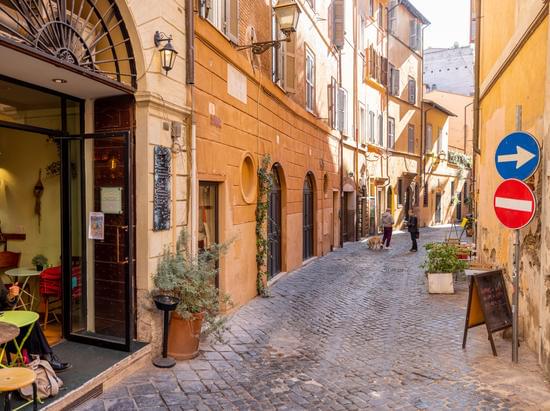Planning a trip to Southern Italy? Look no further for the best travel guide to this mesmerizing region. From its unique cultural heritage to its stunning natural wonders, Southern Italy has something to offer every type of traveler. Whether you’re an avid history buff, a food lover, or simply seeking a picturesque escape, this guide will help you uncover the hidden gems and must-visit destinations that make Southern Italy truly special.
The allure of Southern Italy lies in its incredible diversity. From the enchanting coastal towns of Amalfi, Positano, and Ravello along the Amalfi Coast, to the ancient ruins of Pompeii and Herculaneum frozen in time by volcanic eruptions, each corner holds its own captivating story.
Beyond that, there’s also Baroque beauty in Palermo and Siracusa in Sicily, where architectural treasures blend with centuries-old traditions. And let’s not forget about culinary adventures-Southern Italian cuisine is renowned worldwide for its flavorsome pasta dishes, fresh seafood delicacies, and decadent desserts.
To fully immerse yourself in all that Southern Italy has to offer, proper planning is key. With this comprehensive guide at your fingertips, you’ll be able to make informed decisions about when to visit based on seasonal delights and avoiding crowds. You’ll also receive practical tips on transportation options and accommodations tailored to your preferences.
So get ready for a journey through breathtaking landscapes, ancient ruins steeped in history, delectable culinary experiences, and unforgettable moments of awe-inspiring beauty. The best travel guide to Southern Italy awaits you-let’s embark on this enchanting adventure together.
The Best Time to Visit Southern Italy
One of the important factors to consider when planning a trip to Southern Italy is the timing. Each season in this region brings its own unique delights and experiences, and it’s essential to choose the best time to visit based on your preferences and interests. Whether you want to enjoy pleasant weather, vibrant festivals, or a more peaceful experience with fewer crowds, Southern Italy has something for everyone throughout the year.
- Spring: Springtime in Southern Italy is a magical season filled with blooming flowers, mild temperatures, and lively festivals. The months of April and May are particularly delightful as the countryside bursts into a riot of colors. This is an ideal time for exploring the coastal gems of Southern Italy, such as the stunning Amalfi Coast.
You can expect pleasant weather for leisurely walks along the pebbled beaches and among the charming towns of Amalfi, Positano, and Ravello. Additionally, spring sees some captivating cultural events like Easter processions that showcase the region’s rich traditions. - Autumn: For those seeking a more serene experience while still enjoying pleasant weather, autumn is an excellent time to visit Southern Italy. During September and October, the summer crowds start to dissipate, making it easier to navigate popular tourist sites.
The picturesque towns of Sicily, including Palermo and Siracusa, offer their charming beauty without overwhelming hordes of tourists. Furthermore, autumn in Southern Italy boasts breathtaking landscapes adorned with hues of gold and red as vineyards harvest grapes for winemaking. - Winter: Although winters can be colder in Southern Italy compared to other seasons, they offer a unique charm that shouldn’t be overlooked if one doesn’t mind cooler temperatures. Visiting during this off-season allows you to explore attractions at your own pace without dealing with massive crowds.
Cities like Naples showcase their rich history through fascinating archaeological sites like Pompeii and Herculaneum while providing glimpses into local life away from traditional tourist spots. Plus, the winter festivities, such as Christmas markets and traditional celebrations, add a touch of magic to Southern Italy’s cultural tapestry.
By understanding the distinct seasons and their pros and cons, you can plan your visit to Southern Italy in a way that suits your preferences. Whether you want to bask in the vibrant energy of spring festivals, enjoy a more peaceful experience in autumn, or explore unique attractions during the winter months, Southern Italy promises unforgettable memories no matter when you decide to go.
Exploring the Coastal Gems
The Amalfi Coast is undoubtedly one of the most breathtaking coastal regions in Southern Italy. With its picturesque landscapes, colorful houses, and pebbled beaches, it’s no wonder why this stretch of coastline is a must-visit destination for travelers from around the world.
One of the charming towns along the Amalfi Coast is Amalfi itself. Nestled between rugged cliffs and the shimmering Tyrrhenian Sea, this town offers a perfect blend of natural beauty and historical significance. Visitors can explore the iconic Cathedral of Saint Andrew, known for its stunning Byzantine architectural design, or wander through the quaint streets filled with shops selling locally made ceramics and limoncello.
Another gem along the coast is Positano, famous for its cascading pastel-colored houses built into the cliffs. This idyllic town exudes charm at every turn, whether you’re strolling along Via Cristoforo Colombo or relaxing on one of its serene beaches. Don’t miss climbing up to the Church of Santa Maria Assunta to enjoy panoramic views over Positano and the sparkling sea below.
Ravello is another enchanting town that should not be missed when exploring the Amalfi Coast. Known as a haven for artists and musicians throughout history, Ravello offers a peaceful retreat away from the bustling crowds. Take a leisurely stroll through lush gardens and marvel at scenic viewpoints like Villa Cimbrone or Villa Rufolo, where you can soak in panoramic vistas of the coastline.
To make the most out of your visit to the Amalfi Coast, be sure to embark on some unforgettable experiences too. Hike along the renowned Path of Gods (Sentiero degli Dei) for unrivaled views of cliffs plunging into azure waters. Take a boat tour to see hidden grottoes and caves that dot this majestic coastline. Or simply unwind on one of the many beautiful beaches while sipping a refreshing Limoncello cocktail.
With its undeniable beauty and charm, the Amalfi Coast is truly a coastal gem that will leave you awe-inspired. Whether you’re seeking a romantic getaway or simply want to immerse yourself in natural splendor, exploring the Amalfi Coast is an experience that should not be missed when visiting Southern Italy.
Pompeii and Herculaneum
Within the vast array of historical and cultural wonders that Southern Italy has to offer, the ancient cities of Pompeii and Herculaneum stand out as mesmerizing testaments to the Roman Empire’s legacy. These cities were both tragically destroyed by the eruption of Mount Vesuvius in 79 AD, yet their ruins have been remarkably preserved, offering visitors a unique glimpse into ancient Roman life.
Exploring Pompeii and Herculaneum is like stepping back in time, immersing oneself in a world frozen by volcanic ash.
The Destruction and Preservation of Pompeii and Herculaneum
To truly appreciate the magnificence of these ancient Roman ruins, it is crucial to understand their history. In 79 AD, Mount Vesuvius erupted, burying both Pompeii and Herculaneum under layers of ash and pumice. The volcanic eruption preserved the cities almost perfectly, freezing them in time for centuries until they were rediscovered in the 18th century. Today, these archaeological sites offer an unparalleled opportunity to witness daily life in Ancient Rome.
Visitors can explore the remarkably well-preserved streets of Pompeii, which are lined with intact buildings ranging from humble houses to grand villas. The Forum serves as the heart of the city where political and social activities took place.
The beautifully preserved amphitheater offers insight into ancient entertainment, while the public baths provide a glimpse into Roman hygiene practices. Herculaneum boasts stunning mosaics, well-preserved homes with intricate frescoes on their walls, as well as a fascinating insight into urban planning.
Tips for a Memorable Visit
To make the most out of your visit to Pompeii and Herculaneum, consider hiring a knowledgeable guide who can bring these ancient cities to life through stories and anecdotes. They will help you navigate through the labyrinthine streets while providing insightful commentary on the daily life of Roman citizens. Additionally, be sure to wear comfortable walking shoes, as exploring the vast ruins will require a fair amount of walking.
As these ancient sites can be quite crowded, it’s best to visit early in the morning or later in the afternoon to avoid large tour groups. If you have limited time, prioritize visiting the must-see highlights such as the Forum and amphitheater in Pompeii. And finally, don’t forget to bring essentials like sunscreen, a hat, and plenty of water, as Southern Italy’s climate can be hot and sunny.
Baroque Beauty in Sicily
Located off the southwestern coast of Italy, Sicily boasts a rich history and diverse cultural influences that are evident in its stunning architecture. Two cities that exemplify this blend of styles are Palermo and Siracusa.
Palermo: A Melting Pot of Architectural Wonders
Palermo, the capital of Sicily, is a city that showcases an eclectic mix of architectural styles. From Byzantine mosaics to Arab-Norman palaces, Palermo is a true testament to the island’s diverse history. One must-see attraction in Palermo is the Palatine Chapel, located within the Royal Palace. The chapel’s stunning Byzantine mosaics capture the eye with their intricate detailing and vibrant colors.
In addition to its architectural treasures, Palermo is also known for its bustling markets, such as Vucciria and Ballaro. These vibrant markets offer a sensory experience like no other, with stalls selling fresh produce, local delicacies, and handmade crafts. Visitors can immerse themselves in the lively atmosphere while indulging in some authentic Sicilian street food.
Siracusa: An Ancient Gem on Ortigia Island
Nestled on the southeastern coast of Sicily lies Siracusa, a city steeped in ancient history and charm. The historic center of Siracusa is located on Ortigia Island and is a UNESCO World Heritage site. Walking through its narrow streets feels like stepping back in time as you soak in its Baroque buildings and Greek ruins.
One of the must-visit attractions in Siracusa is the Archaeological Park. This sprawling park houses remnants from various historical periods, including a well-preserved Greek theater and Roman amphitheater. Wander through these ancient ruins to get a sense of Sicily’s past glory.
Another gem on Ortigia Island is Fonte Aretusa, a freshwater spring surrounded by lush vegetation. Legend has it that the nymph Aretusa transformed into the fountain to escape the advances of the river god Alpheus. Visitors can take a leisurely stroll around the fountain and enjoy its serene beauty.
Sicily offers a captivating blend of architectural styles, from Byzantine and Arab influences in Palermo to Greek ruins in Siracusa. Exploring these cities allows visitors to immerse themselves in Sicily’s unique cultural heritage while admiring architectural marvels that have stood the test of time.
| City | Main Attractions |
|---|---|
| Palermo | 1. Palatine Chapel 2. Vucciria and Ballaro markets |
| Siracusa | 1. Archaeological Park 2. Fonte Aretusa |
Culinary Adventures
Southern Italy is known for its rich and diverse culinary traditions, making it a paradise for food lovers. The region boasts a wide array of delicious dishes, each influenced by its unique history and geography. From hearty pastas to fresh seafood, Southern Italian cuisine offers a tantalizing experience that will leave your taste buds craving for more.
One cannot talk about Southern Italian cuisine without mentioning the famous Neapolitan pizza. Originating from Naples, this iconic dish features a thin crust topped with San Marzano tomatoes, mozzarella cheese, and fresh basil. It is cooked in a wood-fired oven for the perfect combination of crispness and chewiness.
Sicilian cuisine also holds a special place in Southern Italy’s culinary landscape. Sicilians take pride in their arancini, rice balls typically stuffed with ragu sauce, peas, and cheese. Another Sicilian delicacy not to be missed is the cannoli. These crispy pastry tubes are filled with sweet ricotta cream and often garnished with crushed pistachios or chocolate chips.
When it comes to savoring the delights of Southern Italian cuisine, there are numerous gastronomic destinations to explore. In Naples, head to Pizzeria Da Michele for an authentic Neapolitan pizza experience. This humble establishment has been serving up mouthwatering pies since 1870.
For seafood lovers, Catania in Sicily is the place to be. Local trattorias line the streets offering an abundance of fresh catch from the Mediterranean Sea. Don’t miss out on sampling dishes such as pasta alle sarde (pasta with sardines) or pesce spada all ghiotta (swordfish with tomatoes, capers, and olives).
If you prefer street food markets where you can taste various delicacies in one place, head to Palermo’s Mercato del Capo. This bustling market is a vibrant tapestry of smells and colors, offering an array of street food options such as panelle (snacks made with chickpea flour) and arancine.
Southern Italy’s culinary adventures are not to be missed. Whether you’re a fan of pasta, seafood, or both, this region will captivate your senses and leave you yearning for more mouthwatering experiences.
The Enchanting Isle of Capri
Capri is a small island located in the Tyrrhenian Sea off the Sorrentine Peninsula, famous for its natural beauty and glamorous atmosphere. This section of the best travel guide to Southern Italy will unveil the secrets of this enchanting isle, providing insights into its breathtaking attractions and luxurious experiences.
One of the most iconic sights in Capri is the Blue Grotto, a stunning sea cave known for its vibrant blue waters illuminated by sunlight passing through an underwater cavity. Visitors can enter the grotto via rowboats and are treated to a magical experience surrounded by shimmering blue hues.
Another must-see attraction on Capri are the Faraglioni, three towering rock formations rising out of the crystal-clear sea. These jagged cliffs provide a picturesque backdrop for boat trips and scenic walks.
In addition to its natural wonders, Capri offers opportunities for indulging in luxury and relaxation. The island boasts high-end boutiques where visitors can find renowned Italian fashion brands, as well as charming streets filled with artisanal shops selling handmade ceramics and sandals. For those seeking tranquility, there are beautiful gardens such as Villa San Michele with its impressive views over the sea.
To fully enjoy all that Capri has to offer, visitors are encouraged to explore on foot or hire a convertible taxi known as “vettura.” Hiking trails lead to secluded beaches like Marina Piccola or viewpoints offering panoramic vistas of the island’s rugged coastline. It is also worth ascending Monte Solaro by chairlift for unparalleled views of Capri and its surroundings.
| Attractions | Activities | Transportation |
|---|---|---|
| – The Blue Grotto | – Shopping in high-end boutiques | – Hire a convertible taxi (vettura) |
| – Faraglioni rock formations | – Exploring artisanal shops | – Walking/hiking trails |
| – Villa San Michele | – Relaxing in beautiful gardens | – Chairlift to Monte Solaro viewpoint |
Lesser-Known Treasures
Calabria, a region in Southern Italy, is often overshadowed by its more popular counterparts like the Amalfi Coast and Sicily. However, this hidden gem is an absolute must-visit for those seeking unspoiled beaches and charming coastal towns. Calabria offers a captivating combination of natural beauty, historical sites, and delectable cuisine that will leave visitors mesmerized.
One of the highlights of Calabria is the picturesque coastal town of Tropea. Known for its stunning cliffs and crystal-clear waters, Tropea boasts some of the most beautiful beaches in Italy. The town itself is perched on a cliff overlooking the Tyrrhenian Sea, providing breathtaking views from every corner. Visitors can wander through narrow alleys lined with colorful buildings and immerse themselves in the local atmosphere.
Another hidden treasure in Calabria is Pizzo, a charming fishing village situated on a cliff overlooking the Gulf of Santa Eufemia. Pizzo is known for its delicious gelato – particularly Tartufo di Pizzo, a heavenly combination of chocolate and hazelnut gelato wrapped in a layer of cocoa powder. History enthusiasts will also enjoy exploring the Aragonese Castle located in Pizzo’s historic center.
Scilla is another not-to-be-missed destination in Calabria. This enchanting seaside village offers stunning views of the Strait of Messina and its mythical sea monster Charybdis from the Ruffo Castle. Scilla’s coastline is dotted with delightful pebbled beaches where visitors can relax and soak up the sun surrounded by ancient legends.
Practical Tips for Exploring Southern Italy
When planning a trip to Southern Italy, it is important to consider practical aspects such as transportation, accommodations, and safety. This section will provide helpful tips to ensure a smooth and enjoyable travel experience in this enchanting region.
Transportation in Southern Italy offers various options depending on your preferences and itinerary. One of the most popular modes of transportation is by train, which allows you to easily connect between major cities like Naples, Rome, and Bari. Trains in Italy are known for their efficiency and comfort.
However, if you prefer more flexibility and want to explore off-the-beaten-path destinations, renting a car can be a great option. Just keep in mind that driving in larger cities can be challenging due to traffic and limited parking options.
When it comes to accommodations in Southern Italy, there is something for every budget and preference. Popular tourist destinations like Naples, Amalfi Coast, Pompeii, and Sicily offer a range of options including luxury hotels, boutique bed & breakfasts, vacation rentals, hostels, and campsites. It is advisable to book accommodations well in advance during peak travel seasons to secure the best deals.
While Southern Italy is generally safe for travelers, it is always important to take precautions. Like any other tourist destination, pickpocketing can occur especially in crowded areas or public transportation. It is recommended to keep your belongings secure at all times and avoid displaying valuable items openly. Additionally, pre-booking tours for popular attractions like Pompeii or Capri can save you time and ensure a hassle-free visit.
By considering these practical tips for transportation, accommodations, and safety in Southern Italy, you can fully enjoy the breathtaking charms that this region has to offer without any unnecessary stress or inconvenience. So start planning your adventure now and get ready for an unforgettable journey through the cultural wonders and natural beauty of Southern Italy.
Conclusion
In conclusion, Southern Italy offers travelers a wealth of unforgettable adventures and experiences. From the breathtaking charms of the Amalfi Coast to the ancient ruins of Pompeii and Herculaneum, this region is filled with unique cultural and natural wonders waiting to be explored.
One of the best times to visit Southern Italy is during the spring when pleasant weather and vibrant festivals abound. However, for those seeking a more peaceful experience, autumn is also a great choice. The picturesque landscapes, colorful houses, and pebbled beaches of the Amalfi Coast are truly awe-inspiring. Visitors should not miss attractions like Villa Rufolo and the Path of the Gods for a truly immersive experience.
Another must-visit destination is Sicily, with its blend of architectural styles in Palermo and the historical charm of Siracusa. Travelers should make sure to explore sights such as the Palatine Chapel and Ortigia Island for a deeper understanding of this region’s rich history.
Culinary enthusiasts will find themselves in paradise as they savor the delights of Southern Italian cuisine. From Neapolitan pizza to Sicilian cannoli, this region boasts an array of regional specialties that are sure to satisfy any palate. Indulging in local flavors at popular restaurants or street food markets is highly recommended.
In summary, Southern Italy is a region filled with enchantment and adventure that beckons travelers from around the world. By immersing oneself in its captivating culture and natural beauty, visitors are sure to create memories that will last a lifetime. So plan your journey now and embark on an unforgettable adventure in Southern Italy.
Frequently Asked Questions
What is the best guidebook for southern Italy?
When it comes to choosing the best guidebook for southern Italy, it ultimately depends on individual preferences and needs. However, a popular and highly recommended option is “Lonely Planet Southern Italy” by Lonely Planet. This guidebook offers comprehensive coverage of the region, including detailed information about popular destinations like Naples, the Amalfi Coast, Sicily, and Puglia.
It provides practical advice on accommodations, transportation, dining options, and sightseeing activities. With high-quality maps, insider tips from locals, and suggested itineraries, this guidebook is a reliable resource for anyone planning a trip to southern Italy.
What is the best way to travel southern Italy?
The best way to travel southern Italy varies depending on personal preferences and circumstances. One popular option is to rent a car as it allows for flexibility and easier exploration of off-the-beaten-path destinations in rural areas or smaller towns. However, keep in mind that driving in cities like Naples can be challenging due to traffic congestion and limited parking options.
Another convenient method is utilizing public transportation networks such as trains or buses that connect major cities within southern Italy. Trains offer an efficient way to travel longer distances, while buses are often more accessible for reaching smaller towns and villages. Additionally, for those who prefer a more relaxed approach or wish to focus on specific regions like Sicily or the Amalfi Coast, organized tours or hiring private drivers can provide a stress-free experience.
How many days do you need for southern Italy?
The number of days needed to explore southern Italy depends on several factors such as personal interests, the desired level of immersion in each destination visited, and available time constraints. Ideally, allocating at least two weeks would allow visitors to experience some of the highlights and diversity that southern Italy has to offer without feeling too rushed. This duration would enable travelers to spend a few days in iconic cities like Rome or Naples before venturing into picturesque coastal areas such as the Amalfi Coast or discovering historic sites like Pompeii or the ancient ruins of Sicily.
However, for those with limited time, a well-planned itinerary spanning around one week can still provide a taste of southern Italy’s unique culture, cuisine, and landscapes. It is important to prioritize key attractions according to personal interests and make choices that align with individual travel goals.

I’m a passionate traveler, writer, and Italophile. My fascination with Italy’s history, art, and culture has led me on countless adventures across the Italian landscape. Through “I Live Italy,” I share my love for this extraordinary country and aims to inspire others to explore its boundless beauty.





